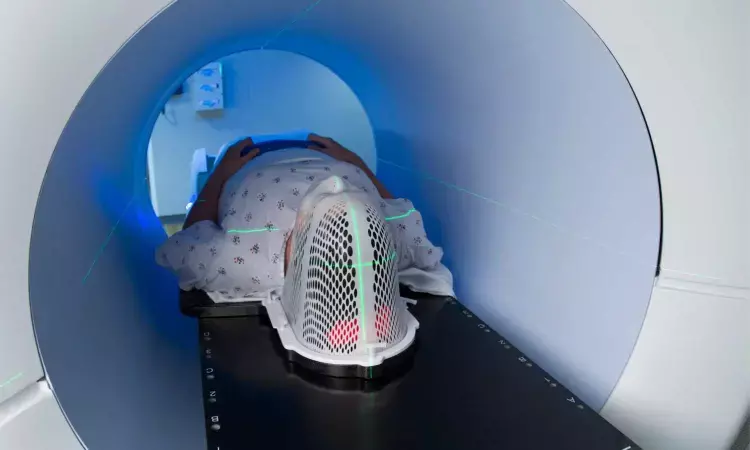- Home
- Medical news & Guidelines
- Anesthesiology
- Cardiology and CTVS
- Critical Care
- Dentistry
- Dermatology
- Diabetes and Endocrinology
- ENT
- Gastroenterology
- Medicine
- Nephrology
- Neurology
- Obstretics-Gynaecology
- Oncology
- Ophthalmology
- Orthopaedics
- Pediatrics-Neonatology
- Psychiatry
- Pulmonology
- Radiology
- Surgery
- Urology
- Laboratory Medicine
- Diet
- Nursing
- Paramedical
- Physiotherapy
- Health news
- Fact Check
- Bone Health Fact Check
- Brain Health Fact Check
- Cancer Related Fact Check
- Child Care Fact Check
- Dental and oral health fact check
- Diabetes and metabolic health fact check
- Diet and Nutrition Fact Check
- Eye and ENT Care Fact Check
- Fitness fact check
- Gut health fact check
- Heart health fact check
- Kidney health fact check
- Medical education fact check
- Men's health fact check
- Respiratory fact check
- Skin and hair care fact check
- Vaccine and Immunization fact check
- Women's health fact check
- AYUSH
- State News
- Andaman and Nicobar Islands
- Andhra Pradesh
- Arunachal Pradesh
- Assam
- Bihar
- Chandigarh
- Chattisgarh
- Dadra and Nagar Haveli
- Daman and Diu
- Delhi
- Goa
- Gujarat
- Haryana
- Himachal Pradesh
- Jammu & Kashmir
- Jharkhand
- Karnataka
- Kerala
- Ladakh
- Lakshadweep
- Madhya Pradesh
- Maharashtra
- Manipur
- Meghalaya
- Mizoram
- Nagaland
- Odisha
- Puducherry
- Punjab
- Rajasthan
- Sikkim
- Tamil Nadu
- Telangana
- Tripura
- Uttar Pradesh
- Uttrakhand
- West Bengal
- Medical Education
- Industry
Mid-Treatment PET/CT Scans Show Promise in Predicting Xerostomia in Head and Neck Cancer Patients

Researchers from the University of Sydney have made a significant discovery in the field of head and neck cancer treatment. By analyzing F-18 FDG-PET/CT images taken during radiotherapy, they identified early metabolic changes in the salivary glands of patients who later developed xerostomia, or dry mouth. These finding have been published in Radiotherapy And Oncology.
Oncology has the potential to revolutionize personalized radiotherapy treatments and improve patient outcomes.
Led by Dr. Yuvnik Trada, the research team examined FDG-PET/CT images from 56 head and neck cancer patients who underwent scans at baseline and during week three of their radiotherapy treatment. The focus was on the ipsilateral and contralateral parotid glands, and the standard uptake values (SUV) of FDG radiotracer, which indicate metabolic inflammation, were measured at each time point. The aim was to determine whether these early imaging changes could predict the development of xerostomia.
● Of the 56 patients, 29 (51.8%) developed moderate to severe xerostomia.
● The analysis revealed a noticeable increase in SUV at week three in both the ipsilateral (8.4%) and contralateral (5.5%) parotid glands compared to normal clinical standards.
● This study is the first to identify mid-treatment FDG-PET metabolic changes in the parotid gland that could potentially be used to predict the occurrence of xerostomia.
● An increase in ipsilateral parotid ΔSUVmedian (p=0.04) and contralateral mean parotid dose (p=0.04) was correlated with the occurrence of xerostomia.
Dry mouth, a common side effect of radiotherapy in head and neck cancer patients, can have a significant impact on their quality of life. Current management of xerostomia focuses on symptom relief using artificial saliva, as there are no proven treatments for reversing the condition. However, the identification of early metabolic changes in the parotid glands opens up possibilities for modifying radiation doses to minimize tissue damage and reduce the likelihood of developing xerostomia.
The researchers constructed four predictive models using multivariate logistic regression, incorporating clinical and radiotherapy planning parameters. The "clinical" model alone demonstrated a moderate correlation with xerostomia (AUC 0.667, AIC 70.9). However, the addition of ipsilateral parotid ΔSUVmedian to the clinical model significantly improved the prediction accuracy, resulting in the highest correlation with xerostomia (AUC 0.777, AIC 65.4).
The recent study conducted by researchers at the University of Sydney has demonstrated the value of mid-treatment FDG-PET/CT scans in predicting xerostomia in head and neck cancer patients undergoing radiotherapy. By identifying early metabolic changes in the parotid glands, clinicians may have the opportunity to optimize treatment plans and minimize the risk of xerostomia. Further research and validation are necessary to solidify these findings, but they offer hope for improved patient care and outcomes in the future.
Reference:
Trada, Y., Lee, M. T., Jameson, M. G., Chlap, P., Keall, P., Moses, D., Lin, P., & Fowler, A. (2023). Mid-treatment 18F-FDG PET imaging changes in parotid gland correlates to radiation-induced xerostomia. Radiotherapy and Oncology: Journal of the European Society for Therapeutic Radiology and Oncology, 109745, 109745. https://doi.org/10.1016/j.radonc.2023.109745
Dr Kamal Kant Kohli-MBBS, DTCD- a chest specialist with more than 30 years of practice and a flair for writing clinical articles, Dr Kamal Kant Kohli joined Medical Dialogues as a Chief Editor of Medical News. Besides writing articles, as an editor, he proofreads and verifies all the medical content published on Medical Dialogues including those coming from journals, studies,medical conferences,guidelines etc. Email: drkohli@medicaldialogues.in. Contact no. 011-43720751


